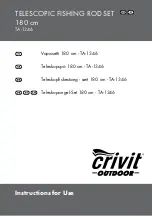
Underground Corrosion Control
3:11
CP 1 – Cathodic Protection Tester Course Manual
©
NACE International, 2000
02/01/05
•
Galvanic anodes find extensive use in protecting the interior surface of
heat exchanger water boxes and other vessels. They are used also within
oil heater-treater vessels, depending on the quality of the interior lining
and the fluid chemistry and temperature.
•
On offshore structures, large galvanic anodes may be used to protect the
underwater components.
Advantages of Galvanic Anodes
•
No external power source required.
•
Low maintenance requirements.
•
Small current output resulting in little or no stray current interference.
•
Easy to install.
•
Easy to add anodes in most cases.
•
Provide uniform distribution of current.
•
Minimum right-of-way/easement costs.
Limitations of Galvanic Anodes
•
Low driving voltage/current output.
•
Many anodes may be required for poorly coated structures.
•
May be ineffective in high-resistivity environments.
•
Higher cost per unit ampere than impressed current due to lower
efficiency (self-consumption).
•
May be difficult or expensive to replace spent anodes.
Component Parts of Galvanic Systems
Anodes
MAGNESIUM
Magnesium anodes are available in two alloys: a high-potential alloy having a
nominal corrosion potential of –1.75 referenced to a copper-copper sulfate
electrode and a low-potential alloy having a nominal corrosion potential of
–1.55 V referenced to a copper-copper sulfate electrode. Magnesium is
normally used in soils and fresh water.
Содержание CP 1
Страница 1: ...CP 1 Cathodic Protection Tester Course Manual February 2005 NACE International 2000 ...
Страница 265: ......
Страница 266: ......
Страница 267: ......
Страница 268: ......
Страница 301: ...RP0169 2002 32 NACE International ISBN 1 57590 035 1 ...
Страница 535: ...TM0101 2001 24 NACE International ISBN 1 57590 137 4 ...















































